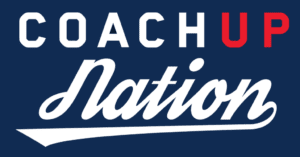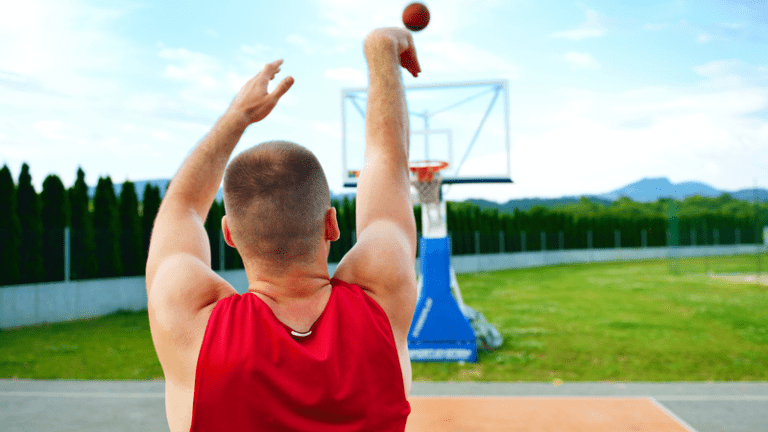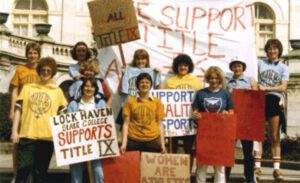I’m going to lay down a groundbreaking insight for you right now. You ready?
The goal of doing shooting drills is to become a better shooter in the game.
Brilliant, right? I should just end the blog post right here. Job well done. Lesson learned.
But the problem is that most people tend to forget this obvious fact. They practice shooting in ways that are far from realistic.
Stationary shooting from 5 spots? 20 free throws in a row? Not very realistic if you ask me.
In particular, there’s one important thing that most shooting drills lack: decision making. To highlight this issue, let me give you an example of a drill that I use with my guys. It’s called “Number Shooting”, and it includes the crucial element of decision making.
Number Shooting
Set up: Put 5 cones at random spots on the floor within shooting range. Don’t stick to the standard 5 spots, put them everywhere. For example, 1 in the corner, 1 just above the free throw line off to the left, 1 in the slot at the 3 point line etc.
Give each cone a number (moving from left to right so it’s easier for the player to remember).
The Drill: The coach–acting as a rebounder–calls out a number (1-5). The player has to sprint to the cone corresponding with that number and receive the pass. From here there are 3 options. Each option depends on a signal from the coach.
- If the coach does nothing, the player shoots it.
- If the coach raises his hands above his head, the player passes the ball back to the coach.
- If the coach spreads an arm out wide to the left or right, the player shoots a 1 dribble pull up in that direction.
After any of the options happen, the coach immediately calls out a new number and the cycle repeats itself.
The drill lasts for 1 minute. Keep score by counting the number of makes and subtracting points every time the player makes the incorrect read.
You might be surprised to see how much your shooting percentage drops when you include those simple hand signals.
The problem with most shooting drills is that the player never has to actually decide whether to shoot the ball or not.
Number Shooting addresses this problem by requiring the player to make a decision based on the coach’s hand signals.
“Game Shots” Is a Lie
Many trainers and coaches use the term “game shots” to indicate that they want players to practice shooting shots that most closely simulate shots that will be taken in the game. The idea of “game shots” is well intentioned but often poorly executed.
The problem is that typical drills don’t accurately represent the challenges faced in a game. This is because the factors that qualify as a “game shot” (in their book) are insufficient.
According to most coaches and trainers, game shots require the following:
- Full speed: sprinting into shots.
- Full concentration: taking each rep seriously.
- Realistic shot types: not shooting MJ fade-aways if you don’t shoot them in the game.
- From realistic spots on the floor: within the player’s range.
If these four conditions are met, coaches deem a drill to contain “game shots.”
But this definition of “game shots” leaves out one crucial element of real game shooting: decision making. In a game, when a player catches the ball, he has to first decide whether or not to take the shot.
This decision depends on a number of factors. For example:
- How far away is the nearest defender?
- Is the defender closing out short with his hands down or flying by with his hands up?
- Does a teammate have a better shot?
- How much time is left on the shot clock?
- What’s the time and score?
- Are my feet set?
Having to process this amount of information and make a snap decision to shoot or not makes the shot itself much more difficult. It’s a skill that requires a high level of cognitive dexterity and an ability to shift one’s concentration rapidly.
The fact that most players don’t train this cognitive ability decreases the efficacy of practice reps. In training, players knows they’re going to shoot the ball as soon as they catch it and that lack of decision making severely limits how game realistic the shot actually is.
This is a major factor in causing the steep drop off between shooting percentages in practices and games.
Number Shooting Is Better…But Not Perfect
There’s a series of three things that players have to do over and over again in a game. That series is:
- Read the situation.
- Make a decision.
- Execute the skill.
The read is made based on the unique conditions in that moment. These are things in the list I mentioned above (How far away is the nearest defender? What’s the time and score? Am I capable of shooting from this range? etc.)
This is where drills as a whole usually come up short:
An exercise that only involves one player can’t possibly teach them how to make the right read because there’s no way to simulate all the conditions of a game.
Although Number Shooting does not address step 1 (Read), it does address both steps 2 and 3 (Decide and Execute). By forcing players to decide what to do based on the hand signals of the coach, players are training the ability to make a decision and then execute the decision.
This is important because the act of making a decision can impact the execution of the decision. This is a crucial point here. So let me reiterate it: the act of making a decision can impact the execution of the decision.
How does this work?
You might be wondering how a decision that was made in the past can influence the execution in the present.
Here are two ways a decision can impact execution:
- Dispersed Concentration
- Obstructed Recall of Movement Patterns
Dispersed Concentration
If a player doesn’t commit their full concentration to the shot, they’re not going to shoot very well.
This is obvious. But often times, players shoot with less than full concentration because their attention is still lingering a half second behind the action.
This is more likely to occur when a decision is made immediately before executing the action. For example, a player may still be wondering if they made the right decision to shoot even as they’re going into their shooting motion.
This is why it’s important to include decision making in training. But normal shooting drills don’t train this shift in concentration.
Obstructed Recall of Movement Patterns
I know this sounds like garbled nonsense, but stick with me here. When a player catches a pass, there are many options available to him. He can drive right, catch and hold, catch and shoot, pass immediately, etc. Each one of these options is a movement pattern.
In order to perform each movement pattern, you have to recall from your memory the exact movements for that action. For example, when you make the decision to shoot, you have to dredge up from your memory the specific body movements for shooting the ball (flex your knees, bend your elbow, begin your jump, bring the ball to your forehead etc.).
You can only execute the action (shooting) once you’ve recalled the movement pattern.
If it takes you even a split second longer to recall the movement pattern or can’t recall the precisely correct movement pattern that the situation requires, your performance will suffer.
In plain english, if you go to shoot but your elbow slips out to the side, you’ll probably miss.
If you know ahead of time what movement pattern you will be doing (e.g.. no decision has to be made), you aren’t practicing the ability to recalling the movement pattern at speed. For example, if you know you’re doing a drill where you shoot 10 stationary 3 point shots in a row, you can recall the movement pattern at your leisure. It’s already front of mind when you go to shoot.
When you add decision making, there’s additional pressure because you have to recall the right movement pattern fast. You make the decision and then have execute the correct movement pattern in a flash. This is much more challenging and can lead to errors.
These two reasons–dispersed concentration and obstructed recall of movement patterns– demonstrate why it’s so important to include decision making in the training. The process of quickly making decisions and acting on them trains the cognitive dexterity that is required for high performance in games.
Traditional shooting drills only focus on executing the action (step 3) and ignore the decision making (step 2). This is a mistake.
But the good thing is that any drill can be improved by including simple decision making processes. So go ahead and take the decision making aspect of Number Shooting and apply it to other shooting drills as well.
Your in-game performance will thank you.
CoachUp is the safest and easiest way to find a coach for personalized training. With our 100% money-back guarantee and vetted coaches, anyone can achieve their full athletic potential. Find your perfect coach today and become the athlete you want to be!
How useful was this post?
Click on a star to rate it!
Average rating 5 / 5. Vote count: 1
No votes so far! Be the first to rate this post.



